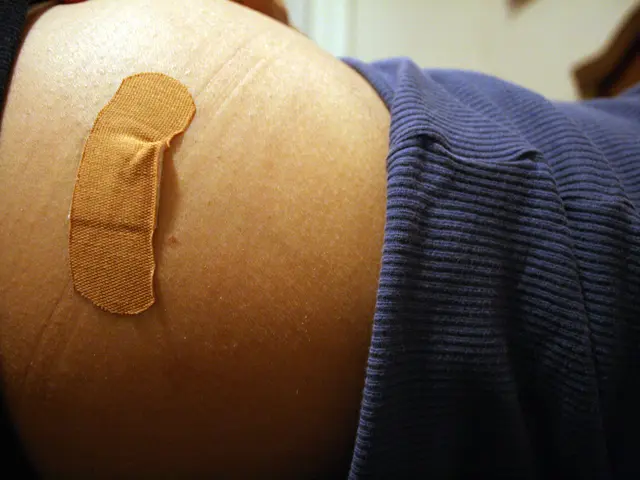Surgical procedure that involves altering the vaginal opening after childbirth, for cosmetic or medical reasons.
In the realm of childbirth and postnatal care, a historical practice known as the husband stitch has surfaced, causing controversy and raising concerns about women's health and consent. This extra stitch, also known as the "daddy stitch" or "husband's knot," was once used in the repair of vaginal tears after childbirth, with the intention of tightening the vaginal opening for the supposed enhancement of male sexual pleasure.
The husband stitch, a relic of outdated medical attitudes, reflects a time when women's bodily autonomy and comfort often took a back seat to male desires and expectations. It emerged in a context where women's health was secondary, a pattern that is now widely regarded as ethically problematic and largely abandoned in modern obstetrics and gynecological care.
The exact origins of the husband stitch are unclear, with specific historical records scarce. However, the term is rooted in 20th-century medical practice and cultural norms that prioritized male pleasure in postpartum vaginal repair. It is part of a broader historical pattern of gynecological procedures undertaken without full consideration of women's health and consent.
Today, the husband stitch is considered an unnecessary and potentially harmful practice. It carries risks including pain, discomfort, and dyspareunia (painful intercourse). The World Health Organization (WHO) does not recommend routine episiotomies, a procedure often associated with the husband stitch, for women undergoing a spontaneous vaginal delivery due to its potential adverse effects.
Women may not learn about an extensive perineal repair, including a possible husband stitch, until their postpartum recovery. It is crucial for women to have a conversation with their gynecologist about their desired birth plan, including episiotomy practices, to ensure they are making informed decisions about their own health.
The vaginal birth canal is a muscle that dilates to allow a baby to pass through for delivery. Routine episiotomies are believed to have more adverse effects than allowing the woman in labor to tear naturally. The husband stitch, like episiotomies, is an outdated procedure with no approved medical use or benefit.
Complications from episiotomies or a husband stitch may include increased pain, persistent bleeding, leaking of urine or feces, signs of infection, persistent pain during sex, inability to use tampons, increased risk of future episiotomies, scar tissue formation, and emotional trauma. Most information about the husband stitch comes from social media forums and firsthand accounts of women who claim to have received it without their consent.
It is essential to note that the husband stitch is not a verified medical procedure, and there are no studies or medical papers to verify its frequency or the number of women who have received it. Healthcare providers should never perform a husband stitch without the woman's consent. Discussing concerns about a potential husband stitch with a doctor, midwife, or trusted individual is advisable.
In conclusion, the husband stitch, a historical medical practice involving an extra stitch made during the repair of vaginal tears after childbirth, is now regarded as an unnecessary and potentially harmful practice. It is part of a broader pattern of outdated and ethically problematic practices that prioritized male pleasure over women's health and consent. Today, women have the right to make informed decisions about their own bodies, and healthcare providers must respect and uphold this right.
- The husband stitch, rooted in 20th-century medical practice and cultural norms, is part of a broader historical pattern of gynecological procedures that disregarded women's health and consent.
- In modern health-and-wellness discussions, the husband stitch is considered an outdated and potentially harmful practice, carrying risks such as painful intercourse and emotional trauma.
- Mental-health considerations are crucial in women's health issues, and the lack of informed consent in practices like the husband stitch could contribute to depression and other mental health issues.
- Scientific advancements in predictive medicine could help prevent such practices by empowering women with knowledge about their bodies, promoting informed decision-making, and advocating for women's health and mental health in the realm of gynecology and women's health.




